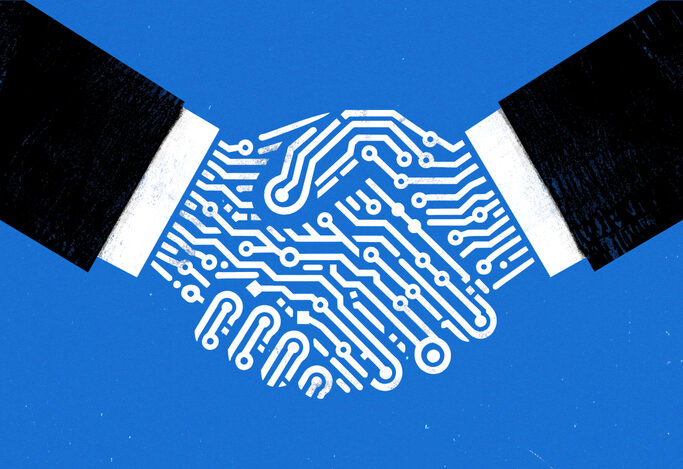Updated on September 12, 2025
The Cyber Kill Chain represents one of cybersecurity’s most foundational frameworks for understanding how cyberattacks unfold. Originally developed by Lockheed Martin’s security team, this model breaks down intrusions into seven distinct, sequential phases that attackers must complete to achieve their objectives.
For security professionals, the Cyber Kill Chain offers a structured approach to defense. By identifying and understanding each stage of an attack, organizations can develop targeted countermeasures to “break the chain” at any point and stop malicious actors before they reach their goals.
This framework operates on a simple but powerful premise: if defenders can disrupt even one stage of the attack sequence, the entire intrusion fails. This linear approach to threat modeling has shaped how security teams think about prevention, detection, and response for over a decade.
Definition and Core Concepts
The Cyber Kill Chain is a cybersecurity framework that models the structure of an attack as a sequential process consisting of seven distinct phases. Each phase represents a critical step that attackers must successfully complete to achieve their ultimate objectives, whether that’s data theft, system disruption, or establishing persistent access.
The framework establishes several foundational concepts that define how modern cyberattacks operate:
- Linear Model: The kill chain follows a step-by-step progression where each phase builds upon the previous one. Attackers cannot skip stages or execute them out of order without compromising their operation’s effectiveness.
- Intrusion: This refers to the complete process of a malicious actor gaining unauthorized access to a network or system. The intrusion encompasses all seven phases, from initial reconnaissance through final objective completion.
- Threat Intelligence: The systematic collection, analysis, and application of information about current and emerging threats. The Cyber Kill Chain provides a structured framework for organizing this intelligence according to attack phases.
- Defense-in-Depth: A security strategy that deploys multiple layers of defensive controls across each phase of the kill chain. Rather than relying on a single security measure, this approach ensures that if one defense fails, others remain in place to stop the attack.
The framework’s power lies in its ability to transform complex, seemingly chaotic cyberattacks into predictable, analyzable sequences that security teams can systematically defend against.
How It Works
The Cyber Kill Chain breaks every sophisticated cyberattack into seven mandatory phases. Each phase represents specific actions attackers must complete to advance their operation.
Reconnaissance
Attackers begin by gathering intelligence about their target. This phase involves collecting publicly available information about the organization, its employees, network infrastructure, and potential vulnerabilities.
Common reconnaissance activities include harvesting email addresses from company websites, researching employees on social media platforms, identifying network ranges and DNS records, and scanning for publicly exposed services. Attackers may spend weeks or months in this phase, building comprehensive target profiles.
Weaponization
During weaponization, attackers create a malicious payload designed to exploit specific vulnerabilities they identified during reconnaissance. This phase involves pairing malware with an exploit to create a deliverable weapon.
The weapon might be a malware-infected PDF document, a compromised Microsoft Office macro, or a malicious executable file. The key requirement is that the weapon must appear legitimate enough to bypass initial security controls while containing the exploit code needed for the next phase.
Delivery
Attackers must transport their weaponized payload to the target environment. Delivery methods vary widely but commonly include spear-phishing emails with malicious attachments, compromised websites hosting exploit kits, infected USB drives, or watering hole attacks on frequently visited websites.
The delivery method must align with the target’s technology environment and user behaviors. Successful delivery requires the weapon to reach the intended victim and appear trustworthy enough to encourage user interaction.
Exploitation
The exploitation phase activates when the delivered payload executes on the victim’s system. This typically occurs when a user opens a malicious attachment, clicks a compromised link, or visits an infected website.
During exploitation, the attacker’s code takes advantage of software vulnerabilities, configuration weaknesses, or user privileges to gain initial code execution on the target system. This phase marks the transition from external attack to internal system compromise.
Installation
Once exploitation succeeds, attackers install persistent malware on the compromised system. This malware establishes a permanent foothold that survives system reboots, user logoffs, and basic security scans.
Installation activities include dropping additional malware components, creating registry entries for persistence, establishing scheduled tasks, or modifying system files. The goal is ensuring continued access even if the initial exploitation vector is discovered and patched.
Command and Control (C2)
The installed malware establishes a communication channel back to the attacker’s infrastructure. This Command and Control channel enables remote access and coordination of the compromised system.
C2 communications often use legitimate protocols like HTTP, HTTPS, or DNS to blend with normal network traffic. Sophisticated attackers implement encrypted C2 channels with multiple fallback communication methods to maintain access even if primary channels are blocked.
Actions on Objectives
With persistent access and reliable communication established, attackers execute their primary mission objectives. These actions vary based on the attacker’s goals but commonly include data exfiltration, lateral movement to additional systems, privilege escalation, or deploying destructive malware.
This final phase often involves the longest timeline, as attackers may maintain access for months while gradually expanding their footprint and extracting valuable information.
Key Features and Components
The Cyber Kill Chain framework incorporates several characteristics that make it particularly effective for security planning and threat analysis.
- Linearity: The model’s sequential structure allows defenders to focus disruption efforts at any single point in the chain. Breaking one link stops the entire attack, providing multiple opportunities for successful defense.
- Prevention Focus: The framework emphasizes stopping attacks during early phases before attackers establish persistent access. This prevention-oriented approach reduces the cost and complexity of incident response.
- Clear Stage Definition: Each of the seven phases has distinct characteristics, required actions, and defensive opportunities. This clarity helps security teams align specific controls and detection methods to appropriate attack phases.
- Actionable Intelligence: The framework transforms abstract threat intelligence into concrete defensive actions. Security teams can map threat indicators to specific kill chain phases and prioritize countermeasures accordingly.
- Standardized Communication: The common vocabulary provided by the kill chain enables consistent communication about threats across different security teams, vendors, and organizations.
These features combine to create a practical framework that bridges the gap between theoretical security concepts and operational defense implementation.
Use Cases and Applications
Security organizations apply the Cyber Kill Chain across multiple operational areas to improve their defensive posture and response capabilities.
Threat Intelligence: Security analysts use the kill chain to organize and categorize threat intelligence according to attack phases. This structure helps identify patterns in adversary behavior, predict likely next steps in ongoing attacks, and prioritize intelligence collection efforts.
Intelligence teams can map specific indicators of compromise (IOCs) to kill chain phases, enabling more targeted detection and prevention strategies. For example, domain reputation intelligence maps to the Command and Control phase, while suspicious email patterns align with the Delivery phase.
Incident Response: When security incidents occur, the kill chain provides a structured approach for damage assessment and containment planning. Response teams can determine which phase an attacker has reached and implement appropriate countermeasures.
If evidence indicates an attacker has reached the Installation phase but not yet established Command and Control, response teams know to focus on network monitoring and outbound communication blocking rather than data loss prevention measures.
Security Architecture: Organizations use the kill chain to evaluate their security control coverage and identify defensive gaps. By mapping existing security tools to specific kill chain phases, architects can spot areas requiring additional investment or different control types.
This approach helps justify security spending by demonstrating how each control contributes to overall attack prevention and where vulnerabilities remain in the defensive strategy.
Advantages and Trade-offs
The Cyber Kill Chain offers significant benefits for cybersecurity programs while introducing certain limitations that organizations must consider.
Advantages:
- Simplicity: The seven-phase model is intuitive and easily understood by both technical security teams and executive leadership. This simplicity facilitates clear communication about threats and defensive strategies across organizational levels.
- Prevention Effectiveness: The framework excels at identifying opportunities to stop attacks before they cause significant damage. By focusing on early-phase detection and prevention, organizations can avoid the high costs associated with data breaches and system recovery.
- Structured Defense Planning: The kill chain provides a systematic approach to security control deployment. Organizations can ensure comprehensive coverage by implementing defenses aligned to each phase rather than adopting security tools randomly.
Trade-offs:
- Oversimplification: Modern cyberattacks don’t always follow the linear progression assumed by the kill chain. Advanced persistent threats may cycle through phases multiple times, skip steps, or execute phases in parallel rather than sequence.
- Limited Scope: The framework primarily addresses external threats that use malware-based attacks. It provides less value for defending against insider threats, supply chain compromises, or Living Off the Land attacks that leverage legitimate administrative tools.
- Lack of Technical Granularity: While the kill chain provides a useful high-level structure, it lacks the detailed tactical and technical information needed for specific threat hunting or incident analysis activities.
Troubleshooting and Considerations
Effective implementation of the Cyber Kill Chain framework requires attention to common failure points and strategic considerations for maximizing its value.
Common Troubleshooting Scenarios:
- Missed Early Indicators: Organizations often struggle to detect reconnaissance and weaponization activities because these phases generate limited observable evidence within the target environment. Enhanced threat intelligence capabilities and external monitoring services can address these blind spots.
- Inadequate Control Configuration: Security controls must be properly tuned for each kill chain phase to provide effective protection. Generic configurations may miss phase-specific attack indicators or generate excessive false positives that reduce operational effectiveness.
- Incomplete Coverage Analysis: Many organizations fail to systematically map their existing security controls to kill chain phases, resulting in unknown defensive gaps. Regular security architecture reviews should explicitly evaluate kill chain coverage to identify improvement opportunities.
Strategic Considerations:
- Integration with MITRE ATT&CK: The Cyber Kill Chain works most effectively when combined with more granular frameworks like MITRE ATT&CK. While the kill chain provides strategic structure, ATT&CK delivers the tactical and technical details needed for operational security activities.
- Evolving Threat Landscape: The framework’s static nature can limit effectiveness against rapidly evolving attack techniques. Organizations should regularly update their kill chain mapping to account for new attack vectors and adversary tactics.
- Metrics and Measurement: Success metrics should align with kill chain phases to provide meaningful visibility into defensive effectiveness. Traditional security metrics may not capture the framework’s prevention-focused approach effectively.
Key Terms Appendix
- Reconnaissance: The initial intelligence gathering phase where attackers collect information about potential targets, their infrastructure, and personnel before launching an attack.
- Weaponization: The process of creating a malicious payload that combines an exploit with malware, designed to take advantage of specific vulnerabilities identified during reconnaissance.
- Command and Control (C2): A communication channel established between compromised systems and attacker-controlled infrastructure, enabling remote access and coordination of malicious activities.
- Threat Intelligence: Structured information about current and potential security threats, including indicators of compromise, attack techniques, and adversary capabilities and intentions.
- MITRE ATT&CK: A comprehensive framework that catalogs adversary tactics, techniques, and procedures based on real-world observations, providing more granular detail than the Cyber Kill Chain model.
- Actions on Objectives: The final phase where attackers execute their primary mission goals, such as data exfiltration, system destruction, or establishing persistent access for future operations.
- Defense-in-Depth: A security strategy that implements multiple layers of defensive controls across different attack phases, ensuring that the failure of any single control doesn’t compromise overall security.






